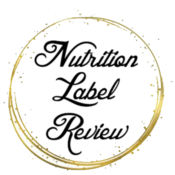If we could pick some of the most common issues companies face when it comes to FDA inspections and recalls, failure to control allergens and label misbranding are often at the top of the list. For this week’s warning letter highlight we are going to look at Ben Heggy Candy Co. which received a warning letter after a company inspection in the spring of 2022. There were numerous violations mentioned but sifting through the letter and highlighting the labeling violations we wanted to highlight certain infractions we see far too often.
1. Failure to control allergens: When a company is unable to control their allergens from receiving all the way through to packaging it creates a high level of risk to both the company and the consumer. The lack of control can lead to both voluntary and federally required recalls which can be very costly. Within the letter the FDA lists many items the company manufactures on the same line and explicitly details the lack of control in the GMPs and company protocols which led to misbranding and violations of FSMA.
For example,
- FDA Investigators observed particles of the cream centers (containing egg) break loose and fall into the chocolate bottomer and this chocolate was used to coat the bottom of Caramels (not containing egg)
- The enrober supervisor explained that other than vacuuming the cloth belts no additional cleaning takes place for the cloth and white conveyor belts in between any product run in each day’s production on the enrober line.
- They were unable to provide any records showing cleaning was performed daily or between producing non-like allergen products on the enrober line, other than when the enrober is drained
In these examples the company was unable to assure that they knew exactly what allergens were present from cross contact, this leads to high levels of risk for the consumer and ultimately creates both financial hurdles as well as regulatory ones, which no company wants. A way to mitigate this is through an elaborate food safety plan.
2. Misbranding on packaging: We see a fair amount of misbranding on labels whether it is because there is simply a lack of understanding of what is required or if the company made decisions to leave off/add knowingly. During the inspection of Ben Heggy Candy Co. the FDA found several packaging violations and included them on the warning letter
For example,
- In that the finished product case label fails to declare the major food allergen “wheat,” as required. The pretzels are made using wheat flour, but wheat is not listed on the case label.
- The case labels and the retail placard labels for the products fail to reveal the material fact that the identified flavors are artificially derived. As required, when a food contains any artificial flavor which simulates, resembles, or reinforces the characterizing flavor, the name of the food on the principal display panel or panels of the label shall be accompanied by the common or usual name(s) of the characterizing flavor and the name of the characterizing flavor shall be accompanied by the word(s) “artificial” or “artificially flavored.
- The case label bears the statement, “The candy may contain one or more of the following ingredients.” (ex. Milk Chocolate Red Raspberry Creams: lists wheat, which is not an ingredient in the product)
- Milk Chocolate Red Raspberry Creams product is manufactured using raspberry puree; however, the label fails to list the puree or all its sub-ingredients on the finished product case label.
In these examples, the company’s labels were misbranded due to not declaring a major allergen, not listing sub-ingredients, and failing to disclose artificial ingredients on the PDP. One of the other major violations that was mentioned in this letter is the “may contain statement” and the product not actually containing the allergen stated. We see many companies use these types of statements to cover manufacturing issues that may arise, however as clearly detailed in the first part of the article you cannot use these types of statements while lacking the control over your manufacturing. You must have a robust food safety plan and be aware of the process and your product, may contain statements will not protect you or your customers.
To read the letter in full, click HERE.
If anything in the letter sounds familiar from your facility, or you would just like to be better prepared for your own FDA inspection when the time comes, let us know. In addition to label compliance reviews, we do facility audits and consulting on following cGMPs. Contact us today to discuss your needs and get a free quote.

